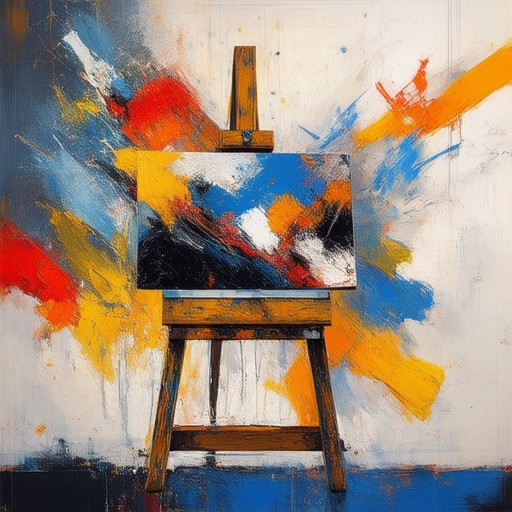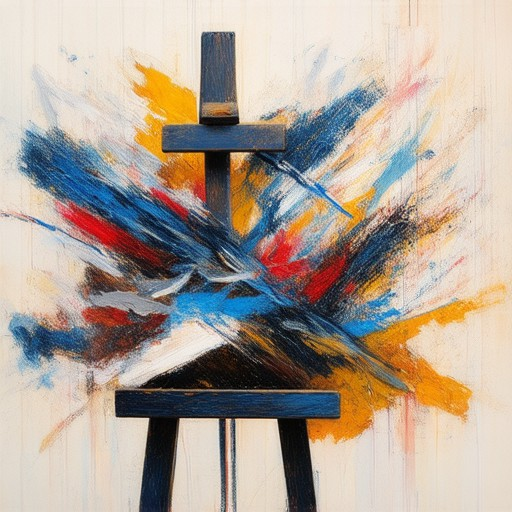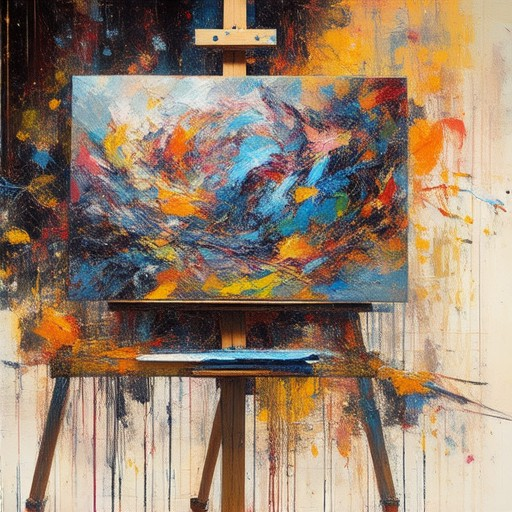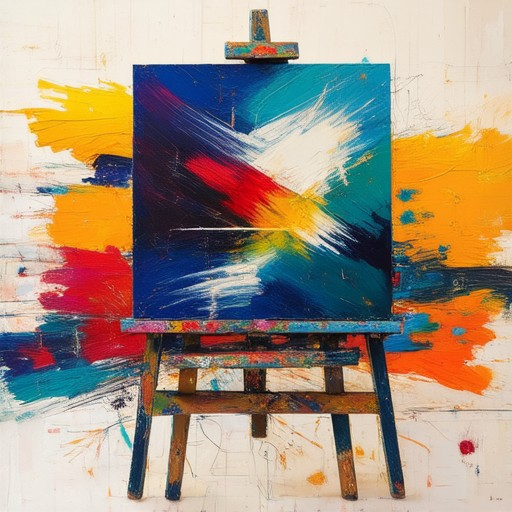Running a successful creative art blog can be both a rewarding and challenging endeavor. With the right strategies, artists and creators can build a platform that not only showcases their work but also fosters connections with like-minded individuals worldwide. Whether you’re exploring the best art blogs for beginners or looking to elevate your own creative art blog to become a go-to resource, understanding the ins and outs of this dynamic space is crucial. From monetization strategies to mastering the art of audience engagement, this guide will walk you through the essential steps to create a blog that stands out. Discover how to navigate the world of creative blogging, explore diverse artistic disciplines, and unlock the secrets to sustaining a thriving online presence. Let’s dive into the fascinating journey of creating a creative art blog that resonates with your audience and inspires your artistic vision.

Do Art Blogs Make Money?
Yes, art blogs can definitely make money. By leveraging your passion for art and sharing it with an audience, you can build a profitable online presence. Here are some proven ways to monetize your art blog:
1. **Affiliate Marketing**: Partner with art supplies and materials companies to promote their products. Earn commissions when readers purchase items through your affiliate links.
2. **Sponsored Content**: Collaborate with art brands or galleries to create sponsored posts. Share your honest thoughts on their products or events, and get paid for your content.
3. **Digital Products**: Sell downloadable art prints, brushes, or templates directly from your blog. Offer exclusive content that fans can access in return for payment.
4. **Courses and Tutorials**: Create in-depth courses or tutorials on topics like digital art, oil painting, or watercolor. Host these on platforms like Udemy or your own website, linked from your blog.
5. **Ad Revenue**: Join ad networks like Google AdSense or Ezoic to display ads on your blog. As your traffic grows, your earnings can increase significantly.
6. **Merchandise**: Design and sell custom art-inspired merchandise such as t-shirts, stickers, and posters. Platforms like Redbubble or Teespring can help you reach a wider audience.
7. **Consulting and Coaching**: Offer one-on-one coaching or consulting services to aspiring artists. Share your expertise and charge for your time and knowledge.
8. **Subscription Models**: Create a premium membership area on your blog where subscribers receive exclusive content, behind-the-scenes looks, and early access to new artwork.
9. **Partnerships with Galleries**: Partner with local or online galleries to feature your work. Write about their exhibitions or curate shows on your blog, earning fees for your contributions.
10. **Crowdfunding**: Engage your audience on platforms like Patreon or Kickstarter to fund your art projects. Offer rewards like exclusive content or physical art pieces in return for contributions.
By combining these strategies, you can turn your art blog into a sustainable income source while connecting with like-minded individuals who appreciate your creativity. Remember to focus on high-quality content, consistent posting, and building a strong community to maximize your blog’s potential.
How to Start an Art Blog
Creating an art blog is a fantastic way to share your creativity, connect with fellow artists, and inspire others. Below are the key steps to get started:
- Choose a Unique Blog Name
- Set Up Your Blog Platform
- WordPress : Ideal for those who want full control over their site. Use WordPress.org for more flexibility.
- Wix : Great for beginners with its drag-and-drop interface. Check out Wix.com .
- Squarespace : Offers a visually appealing platform with templates. Visit Squarespace .
- Register Your Domain
- Select a Hosting Plan
- Design Your Blog Layout
- Create High-Quality Content
- Write detailed tutorials, artist spotlights, and reviews of art supplies or techniques.
- Include high-quality images and videos to showcase your work or process.
- Share personal experiences, challenges, and successes to engage your audience.
- Optimize for SEO
- Research keywords using tools like Ahrefs to improve your search engine visibility.
- Use meta descriptions, alt text for images, and internal linking strategies to enhance your site’s ranking potential.
- Monetize Your Blog
- Implement Google AdSense for display ads.
- Participate in affiliate programs by promoting art supplies or courses.
- Offer sponsored posts or collaborations with art brands.
- Build an Audience
- Promote your blog on social media platforms like Instagram, Pinterest, and YouTube.
- Engage with online communities and forums related to art.
- Use email marketing tools like Mailchimp to nurture leads.
- Stay Consistent and Engaged
- Analyze and Optimize
- Track your blog’s performance using analytics tools like Google Analytics .
- Adjust your strategy based on traffic patterns and audience feedback.
Pick a memorable name that reflects your artistic style or niche. Use tools like Namecheap to find a domain name.
There are several platforms available:
Once you’ve chosen your blog name, register your domain through a reliable provider like GoDaddy .
Depending on your needs, choose between shared hosting, VPS hosting, or dedicated servers. Shared hosting is cost-effective for small blogs, while VPS provides more power for growing sites.
Customize your blog’s theme and layout using tools like Elementor for WordPress users. Choose a theme that aligns with your artistic vision.
Regularly update your blog with fresh content and interact with your audience through comments and social media.

What is a Creative Blog?
A creative blog is a type of blog that prioritizes innovation, originality, and artistic expression. Unlike traditional blogs, creative blogs often focus on unique perspectives, imaginative content, and visually appealing formats to engage readers. These blogs are typically centered around a niche or passion, offering deep dives into subjects like art, design, photography, writing, or lifestyle.
Purpose of a Creative Blog
The primary goal of a creative blog is to inspire and captivate audiences by sharing unique ideas, tutorials, and insights. Creative blogs often serve as platforms for artists, writers, and thinkers to showcase their work, share their journey, and connect with like-minded individuals. They can also help businesses establish a stronger brand identity by aligning with their values and aesthetics.
Examples of Creative Blogs
- Artful Journey
A platform dedicated to artists and art enthusiasts, offering resources, tutorials, and inspiration across various art forms. The site emphasizes exploration of art culture, techniques, and provides visual storytelling to inspire artistic growth. - Design Milk
A leading creative blog focusing on interior design, architecture, and home decor. Design Milk curates articles, interviews, and product reviews to inspire design enthusiasts and professionals. - The Write Practice
A creative blog for writers, offering tips, prompts, and resources to help aspiring writers develop their craft. The blog shares personal experiences and advice to foster a community of writers.
Benefits of Reading Creative Blogs
- Inspiration : Gain fresh ideas and creative sparks for your own projects.
- Skill Development : Learn techniques, tools, and methods from experienced creators.
- Community Connection : Engage with like-minded individuals who share your passions.
- Industry Insights : Stay updated on trends, tools, and opportunities in your field.
Tips for Starting a Creative Blog
- Define Your Niche : Choose a specific area of interest that you’re passionate about.
- Create a Unique Voice : Develop a style that reflects your personality and perspective.
- Consistently Share Content : Post regularly to build and maintain an engaged audience.
- Use High-Quality Media : Incorporate visuals like images, videos, and infographics to enhance your content.
- Engage with Your Audience : Respond to comments and participate in discussions to foster a community.
The Future of Creative Blogging
As digital media continues to evolve, creative blogging remains a powerful tool for self-expression and connection. With advancements in technology, bloggers have access to more tools to create immersive and interactive content. The rise of video blogging and podcasting further expands the possibilities for creative expression.
By embracing creativity and authenticity, bloggers can continue to inspire and influence their audiences, making creative blogging a dynamic and ever-evolving medium.

The Four Creative Arts
The creative arts encompass a diverse range of disciplines that foster creativity, self-expression, and appreciation for aesthetic value. Below are the four primary creative arts, each offering unique opportunities for personal growth and artistic exploration:
- Dance
Dance is a dynamic form of expression that combines movement, rhythm, and emotion. It includes various styles such as classical ballet, contemporary dance, hip-hop, and folk dances. Dance not only develops physical coordination but also enhances mental agility and emotional resilience. - Drama
Drama involves the performing arts, including acting, directing, and playwrighting. It allows individuals to explore characters, narratives, and cultural perspectives. Drama helps build confidence, communication skills, and an understanding of human behavior. - Music
Music is the art of sound and rhythm, expressed through instruments, vocals, or compositions. It encompasses genres like classical, jazz, rock, and electronic music. Music has therapeutic benefits and fosters emotional connection, making it a powerful tool for self-expression. - Visual Art
Visual art includes painting, drawing, sculpture, photography, and digital media. These disciplines enable individuals to communicate ideas visually, often evoking emotions and sparking conversations. Visual art is a medium for storytelling and cultural preservation.
Each of these creative arts contributes uniquely to personal development and cultural enrichment. By exploring these fields, individuals can unlock their creative potential and find endless avenues for inspiration.
For further exploration, visit Artful Journey to discover resources, tutorials, and insights tailored for artists and art enthusiasts.
What Are the 7 Types of Art?
Here are the seven primary categories of art, each offering unique expressions and creative outlets:
- Visual Arts
- Painting
- Sculpture
- Photography
- Drawing
- Printmaking
- Mixed Media
- These forms capture imagery and ideas through colors, shapes, and textures, often on canvas or other surfaces.
-
Performing Arts
- Theater
- Dance
- Music
- Circus Arts
- These arts involve live performances, movement, and audience interaction, showcasing human body language and emotion.
-
Literary Arts
- Poetry
- Prose (Novels, Short Stories)
- Drama
- Playwriting
- These arts use words to convey stories, emotions, and ideas, creating immersive experiences for readers.
-
Applied Arts
- Architecture
- Design (Graphic, Industrial, Fashion)
- Crafts
- These arts apply creative skills to solve problems or create functional and decorative objects.
-
Digital Arts
- Digital Painting
- 3D Modeling
- Animation
- These modern forms use technology to create visual and interactive art, blending creativity with innovation.
-
Folk Arts
- Traditional Crafts
- Handicrafts
- Cultural Ceremonies
- These arts are often passed down through generations, preserving cultural heritage and traditions.
-
Abstract Arts
- Abstract Expressionism
- Surrealism
- Conceptual Art
- These forms prioritize idea, emotion, and concept over representational imagery, challenging traditional perspectives.
Each type of art provides a unique avenue for personal expression and cultural exchange, contributing to the diverse tapestry of human creativity.

What Are the 5 Types of Creativity?
Creativity is a versatile skill that manifests in various forms, each serving unique purposes and applications. Below are five primary types of creativity, each offering distinct approaches to generating ideas and solutions:
- Divergent Thinking : This type of creativity involves exploring a wide range of possibilities and ideas. It’s often associated with brainstorming sessions, where the goal is to generate as many ideas as possible without judgment. Divergent thinkers excel at seeing things from multiple perspectives and considering unconventional approaches.
- Convergent Thinking : On the opposite end of the spectrum, convergent thinking focuses on narrowing down options to find the most effective solution. This type of creativity is practical and efficient, often used in problem-solving scenarios where a clear, logical answer is needed. It’s about refining ideas rather than expanding them.
- Originality : Originality refers to the ability to create something entirely new or unique. This type of creativity involves breaking away from traditional norms and introducing innovative concepts. Originality is crucial in fields like art, science, and technology, where groundbreaking ideas transform industries.
- Emotional Creativity : Emotional creativity involves leveraging emotions and intuition to drive innovation. This type of creativity is particularly useful in fields like design, marketing, and therapy, where connecting with people’s feelings and experiences is essential. Emotional creativity helps in crafting messages and solutions that resonate deeply with others.
- Collaborative Creativity : Collaborative creativity occurs when individuals work together to generate ideas. This type of creativity thrives in team environments and is vital in industries like software development, advertising, and architecture. Collaboration fosters diverse perspectives and leads to more robust and innovative outcomes.
Incorporating these types of creativity into daily life can lead to greater innovation and personal growth. Whether you’re an artist, entrepreneur, or problem-solver, understanding these creative approaches can enhance your ability to think creatively and tackle challenges effectively. Explore further resources and tools to unlock your full potential at Artful Journey .




0 Comments